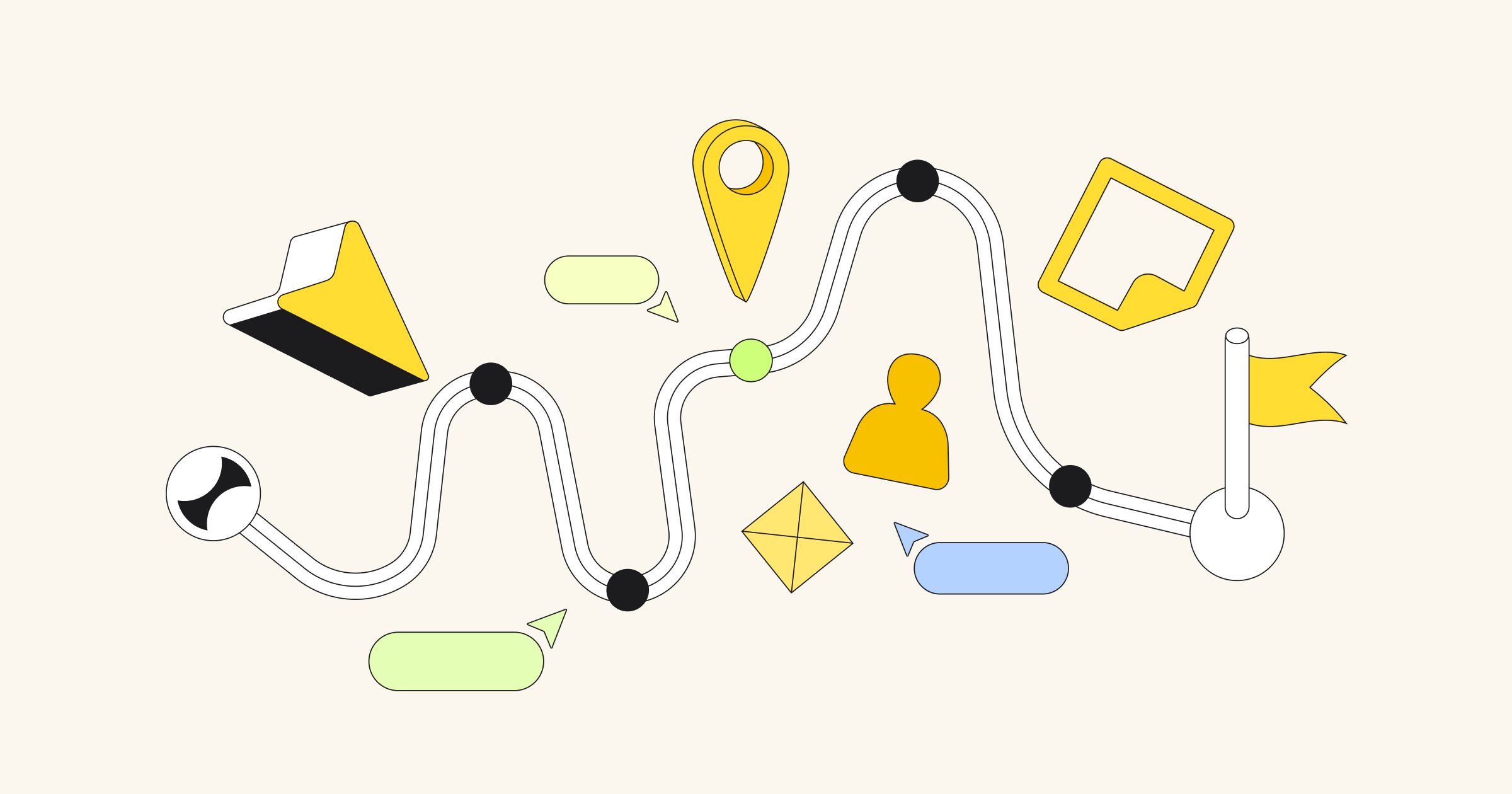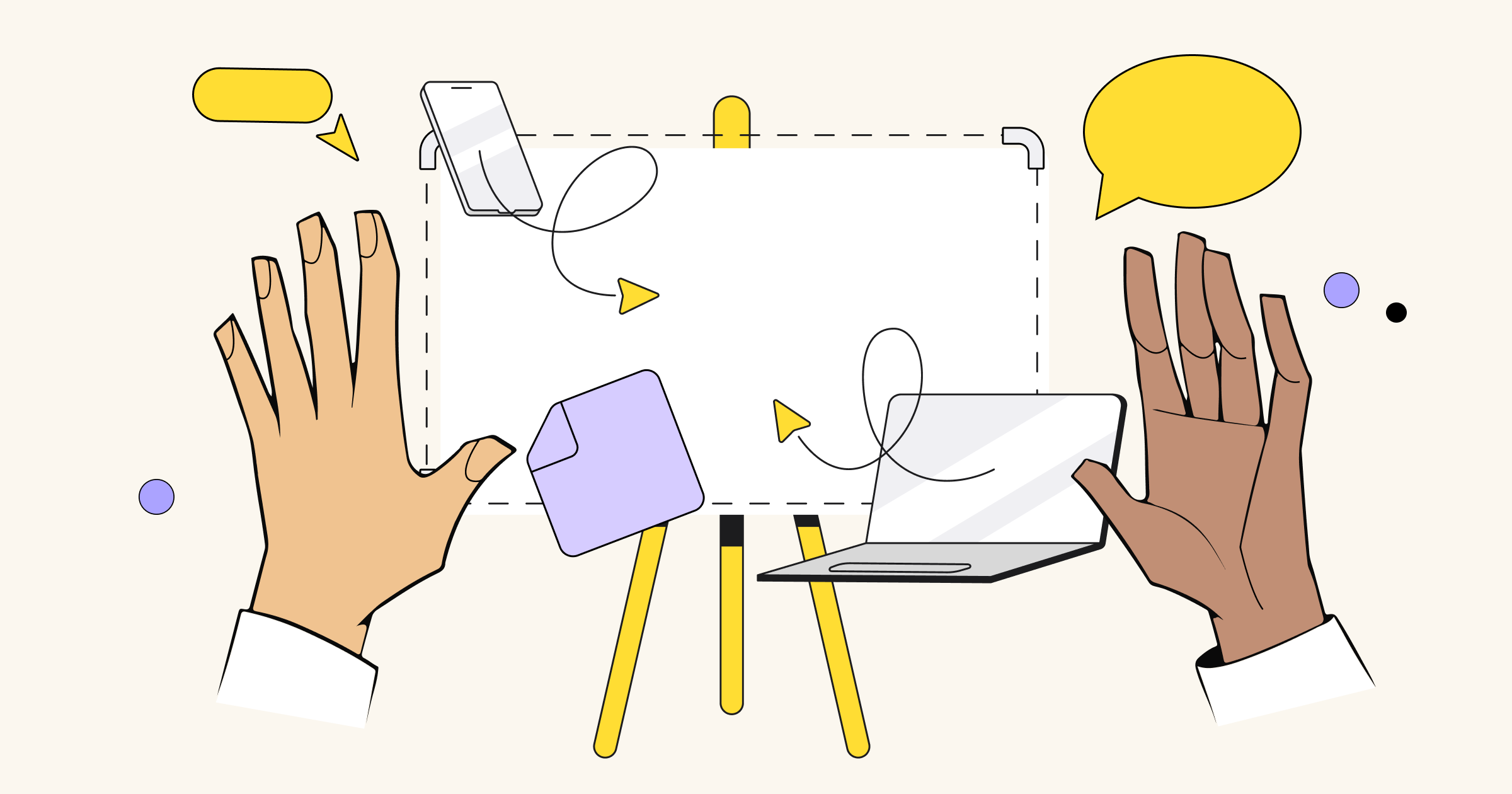In the fast-paced world of technology, the distinction between a good product and a great one isn’t just technical. More than lines of code or design elements, an exceptional product is sculpted by a deep understanding of its users and their active role in the creation process.
In this blog post, we delve into Asana’s approach to product development. We’ll also provide tips for how to co-create a roadmap through a thoughtful process that involves our customers every step of the way. The end result is a product that isn’t merely functional—thanks to a flexible process, it continually evolves to empower organizations to work smarter.
Go beyond user research with ongoing customer feedback
Traditional approaches to product development generally involve collecting and analyzing user feedback, often via survey responses. While this can be one important input for your product development process, conversations with the people who use your product—or who you hope to use it—are irreplaceable.
At Asana, we continually listen to this feedback through our “voice of the customer” program, which has Asana employees who interact with customers submit feature requests and feedback through an Asana form. This creates a two-way street, building a highly engaged user base that feels heard, while providing a continuous stream of valuable customer insights. We then use these insights to power our product roadmap, from conception to launch, ensuring we always prioritize customer needs.
Organize and access customer feedback with automations
Having an efficient and scalable system to collect customer feedback is vital for successful product development. Our form doesn’t just automatically channel customer requests into a designated Asana project. Once inside the project, the feedback is automatically categorized and directed to the right team. Going forward, the project acts as a comprehensive dashboard that we can use to spot trends and inform our roadmap with data-driven decisions and insights.
Often, customer feedback is shared predominantly with product development teams. This is a missed opportunity. In our research at Asana’s Work Innovation Lab—our future-of-work think tank that helps companies adapt to the changing nature of work—we’ve found that improving the customer experience is everyone’s responsibility. When there are tight cross-functional feedback loops, it ensures the customer voice (current and future) is more quickly and accurately incorporated into product development. Fittingly, in our research, we’ve found that product managers work significantly more cross-functionally compared to others in their organization, with 82% of product managers working with cross-functional partners daily.
Make cross-functional work seamless with the Asana integration for Miro. Add cards to Miro boards, invite collaborators, and see your whole project in one place.
To enable these critical tight feedback loops, we’ve prioritized making our voice of the customer program easily accessible. All employees can search the Asana project to understand how our users respond to features, ensuring customer feedback is always at the forefront of our development efforts. As Tim Bowman, Asana’s Head of Market Intelligence and Researcher at The Work Innovation Lab, has explained: “A good ‘voice of the customer’ program doesn’t merely deepen a product manager’s understanding of their customer, it should also improve the collective intuition of everyone across the business.”
Use AI to complement your human-centric design process
At Asana, we’ve found that the most comprehensive product strategy happens when human intuition meets AI. While our human-centric voice of the customer program captures real-world pain points and needs, AI helps us distill that wealth of raw input into actionable insights. This is more than just intelligent sorting—it allows us to detect trends and emerging opportunities. Then we use a qualification process to filter these insights further, ensuring that only the most impactful opportunities are incorporated into our evolving roadmap.
Our enthusiasm for leveraging AI in product development reflects a broader trend. In recent research by Asana’s Work Innovation Lab, we surveyed over 4,500 knowledge workers to better understand how AI is impacting today’s workplace. Product managers are notably optimistic—68% view AI as a positive force, compared to just 51% of knowledge workers overall. That being said, 89% of product managers have concerns that AI could inadvertently introduce bias or discriminatory practices, underscoring the indispensable role of human oversight when AI is on the team.
Learn how Miro approaches AI using four main principles to guide innovation
Incorporate customer feedback into your roadmap
Every six months, the product development team at Asana revisits their roadmap and conducts a comprehensive evaluation to identify top customer needs starting with insights from the voice of the customer project. It’s like a fitness check-up but for our roadmap. We sift through all the requests, looking for common pain points and solutions that can solve our customers’ top-of-mind challenges. Using Asana, we then coordinate across teams to create a cross-functional roadmap, ensuring it aligns with our users’ most pressing needs and broader business strategy.
Alex Hood, our Head of Product at Asana, says, “The potential of AI really takes off when it’s weaved throughout the customer journey and user experience. We see a huge opportunity to use AI to improve both the speed and precision with which we can make decisions backed by data, to help both our customers and employees maximize their impact.”
Maintain agility between roadmap-building sessions
In today’s fast-paced environment, a rigid product development process is a liability, not an asset. Product development teams need to integrate agility into their strategies, allowing them to pivot easily in response to critical customer feedback and important emerging trends. In a business environment that waits for no one, agility is a business imperative.
At Asana, our six-month roadmap provides the structure for our product development, but we also recognize the need for flexibility. We have an escalation process that ensures we can adapt to rapidly changing customer needs or high-priority requests. This approach allows us to continually implement solutions for our customers outside of our scheduled roadmap evaluations. When a significant customer need arises, we initiate an evaluation to determine fit and prioritization within our existing roadmap. This agile approach ensures we can pivot when necessary without compromising the overall product strategy.
Balance creative exploration with razor-focused execution
Once a feature or update makes it onto Asana’s product roadmap, we initiate a “double diamond” process. As its name suggests, the framework is visualized as two diamonds that represent a human-centered design process, with divergent and convergent thinking. It unfolds in four key stages:
- Discover: This first phase is all about understanding the problem space through user research and data analytics.
- Define: Based on the findings in the discover phase, we then define the problem and create a design brief.
- Develop: This is the ideation stage where solutions are brainstormed, prototyped, and tested. It often involves cross-functional collaboration.
- Deliver: The final phase is about refining the selected solution through further testing and getting it ready to build it into the product.
This is a blueprint for innovation that we’ve found to be both effective and adaptable, leading to products that not only meet but often exceed customer expectations.
Launch an employee test run with dogfooding
At Asana, we like to think of ourselves as the first line of defense in delivering a great customer experience. Before any new feature goes public, it must first stand the test of our own workforce—a tough crowd of Asana power users. Their keen eyes can quickly spot any inefficiencies, bugs, or other drawbacks. It’s like having a group of skilled product testers embedded in our daily operations. We take their feedback seriously, making adjustments to address any potential customer pain points. This practice, known as ‘dogfooding,’ is more than a quirky tech culture phrase. It’s a rigorous, internal quality check that allows us to serve great products to our customers from day one.
Intentional, customer-first building
From conception to completion, designing our product roadmap is a mutual journey that we embark on with our customers. The outcome? Products that not only delight users but also inspire smarter ways of working together. In doing so, we’re not merely deploying new features; we’re creating a culture that sets the stage for shared success.
To learn more about how you can bring the power of Asana to your product development process, visit Asana for product management.




